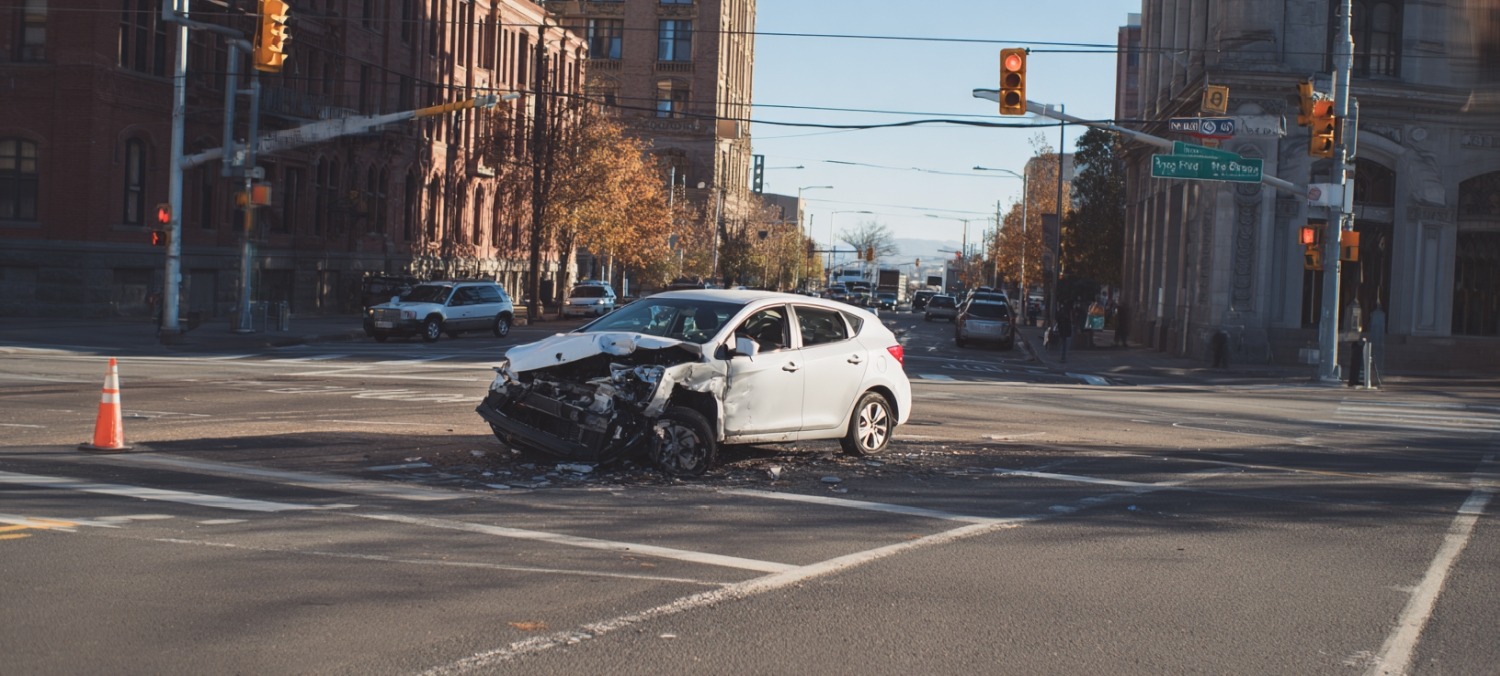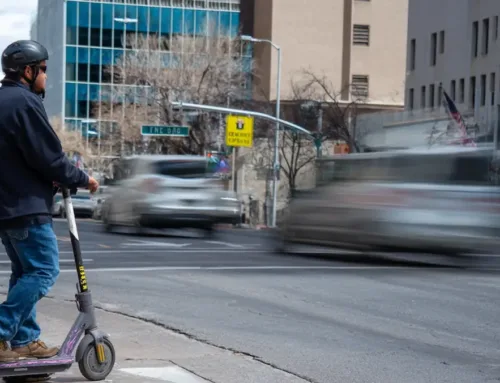The person who hurt you was driving someone else’s vehicle. Maybe the car owner knew this driver had a history of dangerous behavior behind the wheel, yet they handed over the keys anyway. This situation happens far too often on New Mexico roads, and when it does, the law provides an important avenue for justice.
If you’ve been injured by someone driving a borrowed vehicle, the “negligent entrustment” principle allows injury victims to hold vehicle owners responsible when they loan their cars to drivers they know—or should have known—are dangerous or unfit to drive. This creates what courts call an “extra layer of liability” beyond just pursuing the driver who caused your injuries.
The power of negligent entrustment law means that when someone makes the irresponsible decision to hand their keys to a dangerous driver, they can be held accountable for the devastating consequences. This legal protection exists because New Mexico recognizes a fundamental truth: vehicle owners have a responsibility to consider public safety before lending their cars to others.
If you were hurt by somebody driving a car they don’t own, be sure to call the car accident lawyers at Roadrunner Law Firm. They can help you find out all your rights, and make sure you get the maximum possible recovery for your injuries.
How Negligent Entrustment Works in New Mexico
The foundation of negligent entrustment law in New Mexico was established through McCarson v. Foreman, a tragic 1984 case that demonstrates exactly how this doctrine protects injury victims. In that case, Roy Foreman owned a company that allowed his son Skip unlimited use of a company truck. Roy knew Skip had been arrested for cocaine trafficking—the drugs were actually found in the company truck—and Skip had a DWI conviction on his record. Despite this alarming history, Roy continued allowing Skip unrestricted access to the vehicle.
The consequences were fatal. After drinking at a barbecue, Skip drove the company truck across a highway median and collided with another vehicle, killing an innocent driver named Ruel McCarson. When Ruel’s family pursued justice, they didn’t limit their lawsuit to Skip—they successfully sued Roy under the theory of negligent entrustment.
The New Mexico Court of Appeals upheld a $350,000 verdict against Roy, establishing important precedent about when vehicle owners can be held liable for the actions of borrowers. The court explained that negligent entrustment occurs when someone permits another person to use their vehicle while knowing “or having reason to know” that the driver is incompetent or unfit.
This case shows the real-world impact of negligent entrustment law. When vehicle owners make irresponsible lending decisions, innocent people get hurt. The law ensures these owners can be held accountable alongside the drivers who directly cause the harm.

The Knowledge Standard: What Makes Owners Liable
Here’s what makes negligent entrustment cases particularly powerful for injury victims—vehicle owners don’t need actual knowledge that someone is a dangerous driver. New Mexico law applies what’s called a “should have known” standard. This means courts will examine whether a reasonable person in the owner’s position would have recognized the risk of lending their vehicle to that particular driver.
The McCarson court emphasized that evidence of a driver’s “prior acts indicating incompetence or unfitness” becomes essential in these cases. Roy Foreman’s knowledge of his son’s drug trafficking arrest and DWI conviction provided clear evidence that he should have recognized the danger of unlimited vehicle access.
But the law extends far beyond criminal history. Courts will examine patterns of behavior, driving records, and any circumstances that would alert a reasonable vehicle owner to potential risks. This might include knowledge of medical conditions that affect driving ability, substance abuse problems, or a pattern of reckless behavior behind the wheel.
For injury victims, this standard is powerful because it recognizes that many warning signs should put vehicle owners on notice. The teenager with multiple speeding tickets, the friend who openly admits to texting while driving, the family member taking medication that impairs reaction time—all of these situations create the kind of knowledge that New Mexico courts will scrutinize when determining liability.
When Vehicle Owners Should Have Known Better
The tragic reality is that many serious accidents involve borrowed vehicles where the owner had clear reasons to refuse the request. Consider the college student who asks to borrow a car after bragging about street racing. What about the coworker who mentions they “probably shouldn’t drive” after their recent eye surgery? Or the family member who’s been prescribed medication that explicitly warns against operating machinery?
These situations create exactly the kind of knowledge that New Mexico courts examine closely. The key question isn’t whether the owner intended for someone to cause harm—it’s whether they recognized, or should have recognized, that lending their vehicle created an unreasonable risk to innocent people like you.
The emotional component often complicates these decisions. Vehicle owners may want to help friends and family members, making it difficult to say “no” to lending requests. But New Mexico law holds them to a standard of public responsibility: they must consider whether the borrower’s driving history, current condition, or behavior suggests they might endanger others.
When vehicle owners fail to make this assessment—or ignore obvious warning signs—they bear legal responsibility for the consequences. This principle protects innocent drivers, passengers, and pedestrians who become victims of preventable accidents.

The Financial Reality: Multiple Sources of Recovery
For serious injury victims, negligent entrustment law provides access to additional insurance coverage and assets that might not otherwise be available. While the driver’s insurance might have low limits or no coverage at all, the vehicle owner typically carries their own policy that covers accidents involving their car.
The McCarson case resulted in a substantial judgment that likely exceeded what would have been recoverable from the driver alone. Today’s injury victims face even higher medical costs and longer recovery periods, making access to adequate compensation even more important. (read more: What if the injury costs more than the insurance?)
Some vehicle owners carry significant assets beyond their insurance coverage. Business owners, property owners, and others with substantial wealth become reachable through negligent entrustment claims in ways that the borrowing driver might not be. This can make the difference between partial compensation and full recovery for catastrophic injuries.
The doctrine also prevents vehicle owners from hiding behind claims of ignorance. When someone loans their car to a driver with obvious problems, they can’t simply say “I didn’t know” and escape responsibility. New Mexico law demands that they exercise reasonable judgment about who gets control of their potentially lethal machinery.
Building Your Negligent Entrustment Case
If you’ve been injured by someone driving a borrowed vehicle, developing a strong negligent entrustment claim requires careful investigation into what the owner knew about the driver’s fitness. This investigation often reveals patterns of dangerous behavior that weren’t immediately apparent.
Text messages between the owner and driver might reveal discussions about the driver’s drinking habits, medication use, or driving problems. Social media posts could show the driver bragging about risky behavior that the owner would have seen. Employment records might document workplace incidents involving vehicle use that put the owner on notice.
The investigation might also uncover prior accidents, citations, or license suspensions that the owner knew about. Insurance records could reveal previous claims involving the same driver using the owner’s vehicle. Family members and friends might have witnessed conversations where the owner expressed concerns about the driver’s behavior.
These cases require thorough preparation because vehicle owners and their insurance companies will often claim they had no knowledge of any problems. They’ll argue that the driver seemed responsible and that the accident was unforeseeable. Developing evidence to counter these defenses is what your personal injury lawyers at Roadrunner Law Firm are for.

Maximizing Your Recovery Through Multiple Defendants
Smart legal strategy in these cases involves identifying all potential sources of liability and compensation. While the driver who hit you bears primary responsibility, the vehicle owner’s negligent entrustment creates an additional defendant with their own insurance coverage and assets.
This dual-track approach can dramatically increase your potential recovery. Instead of being limited to one insurance policy that might have low limits, you gain access to additional coverage through the vehicle owner’s policy. Instead of pursuing assets from just the driver, you can reach the owner’s property, business interests, and other wealth. This expanded avenue for compensation often makes the difference between minimal recovery and full justice for your injuries.
The strategic advantage extends beyond just money—it’s about leverage and psychology. Vehicle owners often have stronger incentives to settle cases quickly and quietly, especially when they’re business owners concerned about reputation or professionals worried about licensing issues.
Building both claims simultaneously also provides powerful negotiation leverage. Insurance companies know that juries often hold vehicle owners to higher standards than individual drivers, especially when the owner had clear warning signs about the borrower’s dangerous behavior. This knowledge creates pressure for more reasonable settlement offers. When you’re dealing with catastrophic injuries or significant damages, every additional defendant and insurance policy can be the key to securing the comprehensive compensation you deserve for your recovery and future needs.
Injured by Someone Driving a Borrowed Vehicle? The experienced attorneys at Roadrunner Law Firm know how to hold both drivers and vehicle owners accountable for the harm they cause. We’ll investigate what the owner knew about the driver’s dangerous behavior and fight to maximize your compensation from all available sources. Contact us for a comprehensive consultation about your negligent entrustment case.
This article provides general information about New Mexico law and should not be considered legal advice. Every case has unique circumstances that require individual analysis. Consult with a qualified attorney to discuss your specific situation.



